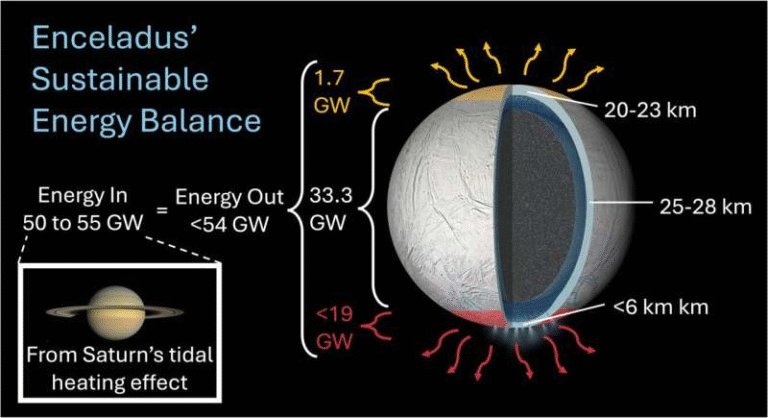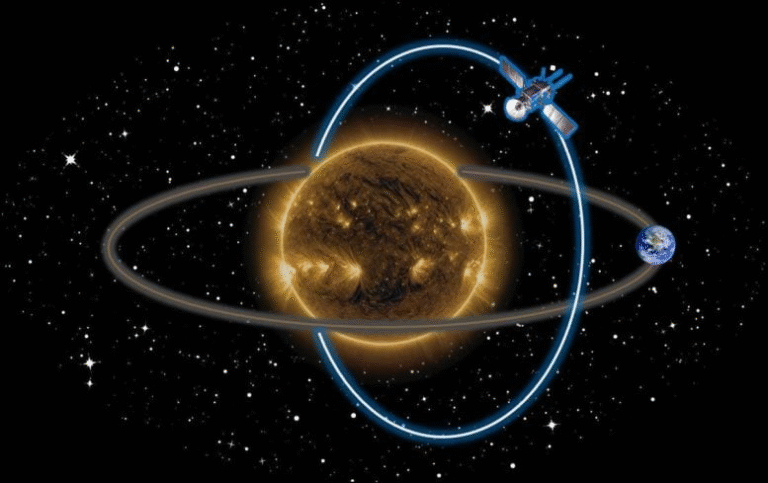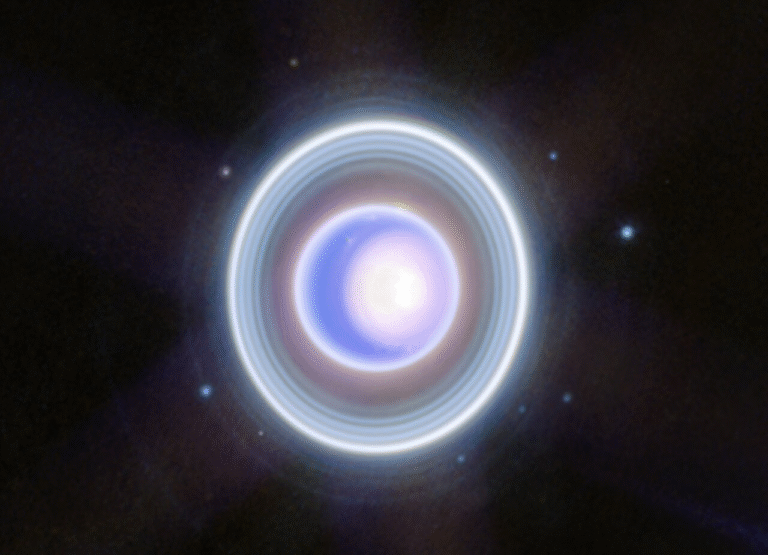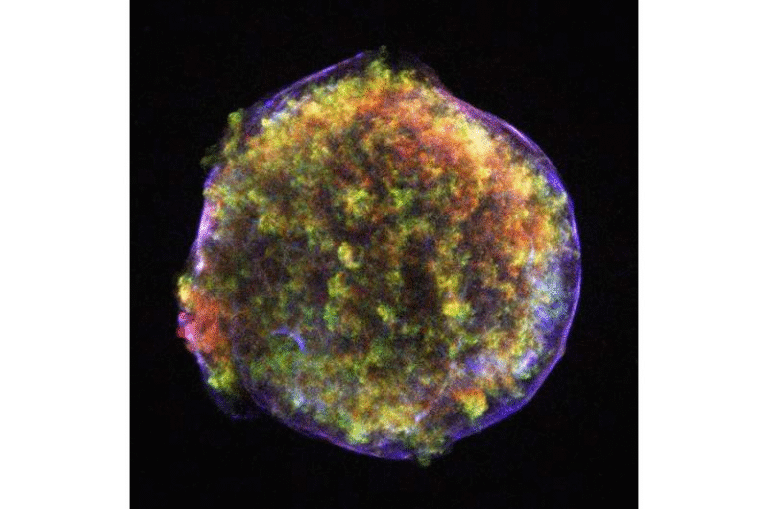Scientists Finally Detect Elusive Solar Waves That Could Explain Why the Sun’s Atmosphere Is So Hot

For decades, scientists have puzzled over one of the strangest facts about our star: the Sun’s atmosphere, or corona, is millions of degrees hotter than its surface. The surface temperature is around 5,500°C, yet the corona — the glowing outer layer visible during solar eclipses — soars to over one million degrees Celsius. This mystery, known as the coronal heating problem, has baffled astrophysicists since the mid-20th century.
Now, researchers may have found a critical piece of the puzzle. A team led by Professor Richard Morton from Northumbria University has directly observed small-scale torsional Alfvén waves — twisting magnetic waves that ripple through the Sun’s plasma and carry energy upward into the corona. This is the first direct evidence of such waves in the Sun’s outer atmosphere, confirming a theory that dates back to 1942, when Nobel Prize–winning physicist Hannes Alfvén first predicted their existence.
The findings, published in Nature Astronomy, were made possible by the Daniel K. Inouye Solar Telescope (DKIST) in Hawaii, the world’s most powerful solar telescope. Using its cutting-edge instrument, the Cryogenic Near Infrared Spectropolarimeter (Cryo-NIRSP), scientists captured the fine twisting motions of plasma that had never been seen before.
The Breakthrough Observation
The Daniel K. Inouye Solar Telescope, operated by the U.S. National Science Foundation (NSF), is a four-meter-wide telescope — four times larger than any previous solar telescope. It was built over two decades through a massive international collaboration. Northumbria University played a key role in the project as part of a UK consortium that designed the telescope’s Visible Broadband Imager cameras, used for detailed observations of the solar atmosphere.
Professor Morton and his team were granted telescope time during its early testing phase. They used the Cryo-NIRSP instrument, which can measure extremely fine details of the Sun’s corona and is highly sensitive to plasma movements. By focusing on light emitted from iron heated to 1.6 million degrees Celsius, they were able to trace how the plasma in the corona moved over time.
The key to the discovery was Morton’s development of a new analytical technique that separates different types of wave motions. The corona’s plasma is filled with complex, overlapping waves, making it difficult to distinguish one type from another. Most motion appears as “swaying” kink waves — large-scale oscillations of magnetic structures that move side to side. However, the torsional Alfvén waves twist the magnetic field lines back and forth along their length, rather than moving the entire structure.
To find these subtle twisting motions, Morton devised a method to remove the dominant swaying component from the data, revealing the hidden torsional patterns. These twisting motions were detected through spectroscopy, which measures how light shifts due to motion. When plasma moves toward Earth, its light shifts slightly toward the blue end of the spectrum; when it moves away, it shifts toward red. The team detected opposite red and blue shifts on the two sides of magnetic loops — a clear signature of twisting motion.
What Are Alfvén Waves and Why Are They Important?
Alfvén waves are magnetic disturbances that travel through plasma, the electrically charged gas that makes up most of the Sun. They carry energy along magnetic field lines and are thought to play a major role in heating the corona and driving the solar wind, the constant stream of charged particles flowing from the Sun into space.
While scientists have observed large, isolated Alfvén waves before — usually during solar flares or eruptions — the newly detected small-scale torsional Alfvén waves appear to exist constantly throughout the corona. That’s what makes them so significant. These continuous waves could be a persistent source of energy that keeps the corona hot, rather than the intermittent bursts of energy from solar flares.
This discovery provides strong observational support for theoretical models that describe how Alfvénic turbulence transfers energy from the lower solar atmosphere to the outer corona. For decades, these models lacked real-world data for validation. With these new observations, scientists can finally test and refine them.
The Tools Behind the Discovery
The Cryo-NIRSP is the first instrument capable of capturing these delicate motions. It observes the Sun in the near-infrared, allowing it to see regions of the corona that other instruments can’t. Its high spectral resolution makes it possible to detect tiny changes in the velocity of plasma — changes that are essential for identifying torsional waves.
The Inouye Telescope’s enormous four-meter mirror collects unprecedented amounts of light, allowing the Cryo-NIRSP to capture detailed spectra of the corona. These spectra reveal how the plasma moves and how magnetic fields twist and interact.
The study was a major international collaboration involving researchers from Peking University, the Chinese Academy of Sciences, KU Leuven (Belgium), Queen Mary University of London, and the NSF National Solar Observatory.
Solving the Coronal Heating Puzzle
The corona is an extreme environment where temperatures can exceed a million degrees Celsius — more than 150 times hotter than the visible surface below it. This temperature difference makes little sense at first glance: heat should flow from hot to cold, not the other way around. For decades, scientists have debated what powers the corona’s intense heat.
The leading suspects include:
- Magnetic reconnection – sudden releases of magnetic energy, similar to small-scale solar flares.
- Wave heating – energy carried by waves (like Alfvén waves) that dissipate in the corona.
- Nanoflares – countless tiny explosions occurring all over the Sun’s surface.
This new detection strengthens the wave heating theory by showing that Alfvén waves are constantly present and can transfer significant energy upward. However, how exactly these waves dissipate their energy to heat the plasma remains uncertain. Possible mechanisms include resonant absorption, phase mixing, or turbulent dissipation — processes where the wave energy is converted into heat as it interacts with plasma structures.
Why This Matters for Earth
Understanding these waves isn’t just about solving a long-standing astrophysical mystery — it also has real-world implications. The Sun’s activity influences space weather, which affects satellites, GPS systems, power grids, and even radio communication on Earth.
The solar wind — the stream of charged particles constantly flowing outward from the Sun — is driven by processes that begin in the corona. If torsional Alfvén waves supply much of the energy that accelerates this wind, then studying them could improve space weather forecasting.
These waves may also be related to mysterious magnetic “switchbacks” detected by NASA’s Parker Solar Probe — sudden reversals in the magnetic field direction within the solar wind. Understanding the role of Alfvén waves might help explain how these switchbacks form and how they carry energy through the solar system.
What Comes Next
The discovery marks a major step forward but leaves many questions open. Scientists now want to determine:
- How common these torsional Alfvén waves are across different parts of the Sun.
- How much energy they carry and how efficiently it turns into heat.
- How they interact with other types of waves and magnetic structures.
The Inouye Telescope’s capabilities, combined with data from NASA’s Solar Dynamics Observatory and the Parker Solar Probe, will allow researchers to piece together a complete picture of wave activity in the solar atmosphere.
As observational technology improves, we may soon understand not just how these waves behave, but how they shape the solar wind and influence our entire heliosphere — the bubble of space controlled by the Sun’s magnetic field.
A Historic Milestone in Solar Physics
This finding effectively ends an 80-year search for the small-scale torsional Alfvén waves predicted back in 1942. It demonstrates that the corona isn’t a static layer of hot gas, but a dynamic sea of magnetic waves, constantly twisting, vibrating, and transferring energy.
For solar physicists, it’s a thrilling validation of decades of theory. For the rest of us, it’s a reminder of just how complex — and alive — our Sun truly is.
Research Paper: Evidence for small-scale torsional Alfvén waves in the solar corona – Nature Astronomy (2025)





